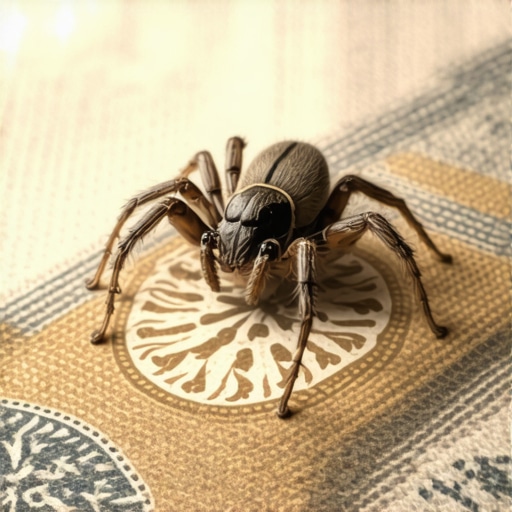When Snakes Slither into Your Dreams: What Does Islam Say?
Imagine waking up in a cold sweat after a vivid dream where snakes—those slithery, mysterious creatures—coiled around your thoughts. In Islamic tradition, dreams about snakes, or zmija as they are known in some cultures, aren’t just random images; they carry significant spiritual symbolism. They can be both ominous and enlightening, reflecting internal struggles, hidden enemies, or even divine warnings.
Could a snake in your dream be a spiritual whisper or a warning sign?
Islamic scholars, dating back to the renowned interpreter Ibn Sirin, have long dissected the symbolism of snakes in dreams. A snake might represent a deceitful person lurking in your life, or it could symbolize an internal challenge you need to overcome. The color, size, and behavior of the snake in your dream all add layers to its interpretation. For example, a black snake often symbolizes danger or a hidden enemy, while a green snake might indicate good fortune or spiritual growth.
But why snakes? Their dual nature—both feared and revered—mirrors the complexities of human experience. In the Quran, snakes sometimes appear as instruments of divine power, such as the serpent of Prophet Musa (Moses). This adds a fascinating dimension to understanding their appearances in dreams.
Snakes and the Soul: A Tangled Relationship in Islamic Dream Interpretations
Dreaming of snakes isn’t just about external threats; it can also reflect internal spiritual battles. Are you grappling with temptation, anxiety, or a crisis of faith? The snake might be nudging you to address these hidden issues. Yet, it’s not always negative; sometimes, the snake symbolizes transformation—shedding old skin to welcome renewal.
For a deeper dive into the spiritual meanings and nuances of snakes in Islamic dreams, you might find this exploration of snake symbolism enlightening.
Is it time to confront the snake in your dream or let it slither away?
Interpreting dreams is as much an art as it is a science. Personal context, emotions felt during the dream, and your waking life’s spiritual condition all play a role. Engaging with these symbols thoughtfully can illuminate paths for personal growth and cautionary insight.
Curious to share your own dream experiences or interpretations? Feel free to get in touch—sometimes, a shared story unravels the most intricate spiritual knots.
For those fascinated by the broader realm of Islamic dream symbolism, the work of Ibn Sirin remains an authoritative guide. His insights continue to influence modern interpretations and remind us that dreams are windows into our soul’s quiet conversations.[1]
Delving Deeper: The Multifaceted Meaning of Snakes in Islamic Dreams
While the initial interpretation of snakes in dreams might evoke caution or fear, the Islamic perspective encourages a more nuanced understanding. A snake’s presence can mirror various spiritual and psychological dimensions, inviting dreamers to reflect on their personal journeys. The diversity in snake symbolism—ranging from harm and deception to renewal and protection—demands careful contemplation of the dream’s details and the dreamer’s real-life circumstances.
For instance, a snake shedding its skin in a dream can symbolize profound transformation and spiritual rebirth, resonating with the Quranic theme of renewal and purification. Conversely, a venomous snake might warn of imminent danger or betrayal. The interplay between these meanings is a reminder that the spiritual messages embedded in dreams are rarely one-dimensional.
How can understanding snake symbolism in dreams enhance your spiritual resilience?
Engaging with such symbolism can empower believers to identify unseen challenges and opportunities within their spiritual lives. By recognizing the metaphorical snakes—whether as personal vices, external adversaries, or tests from Allah—dreamers can cultivate vigilance and fortitude. This reflective practice aligns with the teachings of Islamic scholars who emphasize that dreams can serve as divine guidance, nudging individuals toward self-improvement and greater awareness.
The renowned scholar Ibn Sirin, whose interpretations remain highly respected, posited that contextual factors such as the snake’s environment and the dreamer’s feelings are critical for accurate analysis. This thoughtful approach prevents hasty conclusions and encourages seekers to explore the deeper lessons their dreams offer.
To expand your understanding of these spiritual insights, the article Exploring the Symbolism of Snakes in Islamic Dreams provides comprehensive interpretations and practical guidance.
Intersecting Realities: Dreams, Spiritual Growth, and the Human Psyche
Dreams involving snakes often act as mirrors reflecting inner conflicts, fears, or suppressed emotions. Islam acknowledges these dreams as part of the soul’s dialogue with the Divine, showing pathways toward healing or warning. Such dreams can catalyze personal transformation when approached with humility and discernment.
Modern psychological insights complement the Islamic viewpoint by suggesting that snakes in dreams may represent subconscious anxieties or repressed feelings. Integrating these perspectives helps believers contextualize their dreams within both spiritual and psychological frameworks, fostering holistic self-awareness.
What practical steps can one take to interpret and act upon snake dreams in a spiritually meaningful way?
First, document the dream’s details—snake color, behavior, and your emotional response. Next, reflect on current life circumstances, relationships, and spiritual state. Seeking counsel from knowledgeable Islamic sources or trusted scholars can provide clarity and prevent misinterpretation. Prayer and supplication for guidance are essential to align one’s understanding with divine wisdom.
By embracing this reflective process, you transform dreams from mere nocturnal images into instruments of guidance and growth, as emphasized in Islamic tradition.
If you have encountered vivid dreams about snakes or other symbolic creatures, consider sharing your experiences or questions through our contact page. Collaborative interpretation often unveils richer insights and strengthens communal learning.
For further exploration, you might also find value in our resources on Islamic dream dictionary interpreting dreams of animals and understanding dreams of pregnancy in Islam, which expand the spectrum of symbolic interpretations.
[1] Ibn Sirin’s classical works continue to serve as a cornerstone for Islamic dream interpretation, blending spiritual wisdom with psychological insight.
Unraveling the Symbolic Intricacies of Snakes: Beyond the Surface of Islamic Dream Interpretation
While traditional interpretations provide foundational understanding, the symbolism of snakes in Islamic dreams extends into complex spiritual and psychological territories. This intricate symbolism invites scholars and believers alike to probe beneath the surface, discerning the layered meanings that snakes embody within the human soul’s journey.
In Islamic mysticism, or tasawwuf, snakes can represent the nafs (the ego or lower self), which must be tamed and refined to attain spiritual purity. The struggle with the snake in dreams might mirror the aspirant’s battle against base desires, whispering the call for self-discipline and spiritual vigilance. Conversely, a peaceful or subdued snake may signal mastery over one’s inner impulses, reflecting a higher state of consciousness.
How do variations in snake behavior and environment in dreams correlate with specific spiritual states in Islamic esoteric teachings?
Delving deeper, Islamic esoteric teachings suggest that the snake’s behavior—whether aggressive, passive, or transformative—can signify distinct spiritual conditions. For example, a snake attacking might symbolize external trials or spiritual tests sent by Allah to strengthen faith. A snake shedding its skin is emblematic of spiritual renewal, shedding sins or ignorance to embrace enlightenment. Moreover, the environment—whether a snake appears in lush gardens, barren deserts, or within the home—can reflect the dreamer’s internal landscape and spiritual atmosphere.
These nuanced interpretations underscore the necessity of contextual analysis, considering the dreamer’s personal spiritual journey, emotional state, and real-life circumstances.
Integrating Psychological Perspectives with Islamic Dream Interpretation: A Holistic Approach
Contemporary Islamic scholars and psychologists increasingly recognize the value of integrating psychological frameworks with traditional dream interpretations. Snakes in dreams may evoke subconscious fears or unresolved conflicts, providing a mirror to the dreamer’s psyche. When approached from this angle, snake dreams become tools for self-reflection and healing.
For instance, Carl Jung’s archetype theory aligns intriguingly with Islamic symbolism, as snakes often represent transformation and the unconscious. Recognizing this congruence allows believers to reconcile spiritual insights with psychological growth, thereby fostering a more holistic understanding of their dream experiences.
What methodologies can a dreamer employ to harmonize Islamic interpretative traditions with psychological insights when analyzing snake dreams?
Practical steps include maintaining a detailed dream journal to capture the emotions, snake characteristics, and the dream context. Reflective prayer (dua) and meditation can facilitate spiritual clarity, while consulting qualified Islamic scholars ensures alignment with religious principles. Simultaneously, engaging with psychological counseling or frameworks can help decode subconscious symbolism, enriching the dreamer’s comprehension.
This dual approach honors the complexity of human consciousness, encouraging growth across spiritual and psychological dimensions.
Practical Implications: Harnessing Snake Dreams as Catalysts for Spiritual Growth and Vigilance
Recognizing the multifaceted symbolism of snakes in Islamic dreams equips believers to use these nocturnal messages proactively. Dreams can serve as early warnings against deceit or moral lapses, as well as invitations to embrace transformation and purification.
By cultivating awareness and responsiveness to such dreams, one can navigate life’s challenges with enhanced spiritual resilience. This practice embodies the prophetic tradition that dreams are among the forty-six parts of prophecy (hadith), underscoring their significance in a believer’s life.
For further scholarly exploration, the detailed work by Ibn Sirin remains a cornerstone reference. His treatises, preserved and studied extensively, provide timeless guidance on interpreting complex dream symbolism with both reverence and analytical precision.[1]
Are you ready to deepen your understanding and transform your dream experiences? Engage with our expert community and explore tailored interpretations by visiting our contact page. Together, we can unlock the profound wisdom woven into your dreams and illuminate your path toward spiritual awakening.
Unveiling the Hidden Layers: How Does the Snake’s Movement in Dreams Reflect Spiritual Progress or Regression?
In the intricate tapestry of Islamic dream interpretation, the behavior and movement of snakes are pivotal in decoding their profound messages. A snake that moves swiftly and purposefully in a dream might symbolize an urgent spiritual challenge or an imminent revelation, while a sluggish or coiled snake could indicate stagnation or suppressed inner conflicts. This dynamic behavior often mirrors the dreamer’s spiritual journey, highlighting moments of advancement or regression in faith and self-discipline.
Islamic scholars emphasize that keen observation of such details offers nuanced guidance. For instance, a snake ascending a tree or climbing walls may represent rising temptations or spiritual tests, whereas a snake retreating could signal the waning influence of negative forces. These insights invite believers to remain vigilant and introspective, aligning their responses with divine wisdom.
Can understanding snake interactions in dreams reveal the nature of your spiritual adversaries or allies?
Beyond solitary snakes, dreams featuring multiple snakes interacting—fighting, coiling together, or even communicating—may indicate the complex network of relationships influencing the dreamer’s spiritual state. Such imagery can reveal the presence of both adversaries and allies, internal or external, challenging or supporting the believer’s path.
According to classical interpretations, as detailed by Ibn Sirin and later scholars, a snake biting another snake or a person in a dream may symbolize betrayal or hidden enmity, while snakes that coexist peacefully might represent reconciled conflicts or harmonious spiritual forces. This level of analysis deepens our understanding of the social and spiritual ecosystems that shape our inner and outer realities.
For those intrigued by these multifaceted interpretations, exploring comprehensive analyses of snake symbolism in Islamic dreams can provide invaluable context and guidance.
Expert Insights: Integrating Quranic Narratives and Sufi Perspectives to Enrich Dream Analysis
Islamic mysticism (tasawwuf) and Quranic exegesis offer profound layers of interpretation that transcend the literal, illuminating how snake dreams can serve as metaphors for the soul’s purification and trials. The Quran’s depiction of the snake as both a sign of divine power and as a symbol of deception invites a dialectical approach to dream interpretation.
Prominent Sufi scholars interpret the snake’s dual nature as a representation of the nafs—the ego that must be subdued—and the transformative energy that propels spiritual evolution. In this context, a snake’s shedding of skin becomes an allegory for spiritual rebirth, a theme echoed in the works of Ibn Arabi and Rumi.
Modern dream researchers, such as Dr. Muhammad Al-Kiswani, highlight the importance of contextualizing dreams within both scriptural and esoteric frameworks to unlock their full significance (Al-Kiswani, 2023).
What advanced methodologies can scholars and dreamers adopt to bridge classical Islamic dream interpretation with contemporary spiritual psychology?
Bridging these domains requires a multidisciplinary approach: combining textual analysis of classical dream manuals with phenomenological study of the dreamer’s lived spiritual experience. Techniques such as guided meditation, reflective journaling, and consultation with spiritual mentors can complement traditional interpretative methods. This integration fosters a holistic understanding that respects both the sacred texts and the psychological realities of modern believers.
If you are eager to explore these sophisticated interpretive strategies or wish to share your unique dream narratives, we warmly invite you to connect with our expert community. Engaging in this dialogue enriches communal wisdom and personal enlightenment.
Expert Insights & Advanced Considerations
The Snake as a Mirror of the Nafs and Spiritual Vigilance
In Islamic mystical thought, the snake frequently symbolizes the nafs, or ego, representing the inner desires and impulses that the believer must recognize and refine. Dreams of snakes thus often indicate a call toward self-discipline and spiritual vigilance. Observing the snake’s behavior—whether aggressive or subdued—provides nuanced feedback about one’s spiritual state and progress.
Contextual Nuances in Snake Dream Interpretations Are Crucial
Classical scholars like Ibn Sirin emphasized that the environment, color, and movement of snakes in dreams cannot be interpreted in isolation. For example, a snake shedding its skin in a lush garden can signal spiritual renewal, whereas a venomous snake in the home may warn of betrayal or hidden danger. Careful contextual analysis reflects the complexity of dream symbolism and prevents simplistic readings.
Integrating Psychological Frameworks Enhances Understanding
Modern psychology complements Islamic interpretations by framing snakes as archetypes of transformation and subconscious anxieties. Utilizing reflective journaling alongside prayer and consultation with scholars allows dreamers to harmonize spiritual insights with psychological self-awareness, promoting holistic growth.
Multiple Snakes Reflect Complex Spiritual and Social Dynamics
Dreams depicting interactions among multiple snakes represent the interplay of internal conflicts, external adversaries, and spiritual allies. Understanding these dynamics can reveal deeper layers of relational and spiritual challenges, encouraging a more comprehensive approach to personal reflection and communal harmony.
Dreams as Prophetic Components Demand Active Engagement
Islamic tradition regards dreams as part of prophecy’s forty-six segments, highlighting their significance. Rather than passive experiences, snake dreams invite believers to engage actively through reflection, prayer, and seeking knowledgeable counsel, transforming these nocturnal symbols into catalysts for spiritual resilience.
Curated Expert Resources
- Ibn Sirin’s Dream Interpretation Manuscripts — The foundational classical texts offering detailed symbolism and contextual guidelines essential for serious students of Islamic dream analysis.
- “Exploring the Symbolism of Snakes in Islamic Dreams” (link) — A comprehensive modern resource blending traditional and contemporary insights.
- Dr. Muhammad Al-Kiswani’s Research on Spiritual Dreams — Scholarly articles integrating Quranic narratives with esoteric interpretations, valuable for advanced understanding.
- Islamic Dream Dictionary: Interpreting Dreams of Animals (link) — A practical tool providing broader animal symbolism that complements snake dream analysis.
- Works on Tasawwuf and Dream Symbolism — Texts exploring the intersection of Islamic mysticism and dream interpretation, crucial for grasping the esoteric dimensions.
Final Expert Perspective
Delving into the symbolism of snakes in Islamic dreams reveals a rich tapestry of spiritual, psychological, and esoteric meanings that transcend simple interpretations. These dreams serve as dynamic guides reflecting the dreamer’s internal struggles, spiritual growth, and relational complexities. By engaging deeply with this symbolism through contextual analysis, reflective practice, and consultation with knowledgeable sources, believers can transform their dream experiences into profound tools for self-awareness and divine guidance. For those wishing to deepen their journey, we invite you to connect with our expert community via our contact page and explore further resources like understanding dreams of snakes and the broader Islamic dream dictionary on animals. Embrace the journey of interpreting your dreams not only as revelations but as invitations to spiritual awakening and resilience.




The article’s exploration of snake dreams in Islamic tradition provided a fresh perspective on something I’ve often wondered about. I find it particularly fascinating how snakes symbolize both threats and opportunities for transformation, reflecting our inner spiritual battles. In my own experience, I once dreamt of a green snake that was not aggressive but seemed calm as it shed its skin. Reflecting on it later, I realized I was going through a period of personal growth and spiritual renewal, so the symbolism really resonated with me. The detailed attention to the snake’s behavior, color, and setting in Islamic interpretations, as discussed with Ibn Sirin’s insights, emphasizes how personal context is key in understanding these dreams. I’m curious how others balance the spiritual warnings in such dreams with the encouragement for transformation and resilience. Has anyone experienced a dream where a snake signaled both a challenge and an opportunity, and how did that impact your spiritual journey? Also, do others maintain dream journals or seek scholarly advice to interpret such complex symbols more accurately? Sharing these experiences might help deepen our collective understanding and strengthen our vigilance and growth in faith.
Responding to Laila Hassan’s thoughtful reflections, I resonate with the idea that snake dreams encapsulate both caution and opportunity within the Islamic tradition. In my own experience, a dream featuring a black snake that seemed to circle but never attack left me pondering its dual symbolism. Initially, I interpreted it as a warning about a hidden adversary, aligning with classical interpretations. Yet, over time, it became clear the dream was nudging me to confront inner fears and doubts. This duality—warning of external or internal challenges while also inviting growth—is what makes snake dreams deeply compelling. I maintain a dream journal, noting colors, environments, and emotions, which has been invaluable in tracing the evolving meaning of such dreams. Additionally, I’ve sought guidance from knowledgeable scholars who emphasize context and spiritual state for accurate interpretation, avoiding rash conclusions. I wonder if others find this reflective and consultative approach helps in harmonizing the layered messages from snake dreams? Also, how do you balance the unsettling feelings such dreams might evoke with their transformative potentials? Sharing these nuances could enrich our understanding and deepen our spiritual resilience collectively.
Building on the insightful experiences shared by Laila and Fahim, I’ve often found that snake dreams in Islamic tradition serve as profound tools for self-reflection. What resonates deeply with me is the emphasis on context—the snake’s color, demeanor, and the dreamer’s feelings. Personally, I dreamt of a snake that was neither entirely threatening nor benign, but seemed to almost beckon me to pay attention to unresolved conflicts within myself. This made me contemplate my own “nafs” and areas where self-discipline could be strengthened. I appreciate how the article and Ibn Sirin’s teachings encourage avoidance of simplistic interpretations, urging a holistic view that marries spiritual symbolism with psychological realities. It strikes me that dreamers might benefit greatly from combining spiritual practices, like dua and seeking scholarly counsel, with journaling and reflective meditation. I’m curious if others have tried incorporating such a dual approach? Has anyone experienced a shift in how they interpret these snake dreams after blending traditional Islamic perspectives with modern psychological understanding? Sharing practical strategies might help this community navigate the sometimes unsettling yet transformative messages embedded in these dreams.
This article offers a profound look into the multifaceted symbolism of snakes in Islamic dreams, highlighting how they embody both challenges and opportunities for spiritual growth. From my own experiences, I’ve noticed that the color and behavior of the snake in dreams often reflect the state of one’s inner spiritual health. For example, a calm green snake might symbolize divine favor or personal progress, while a threatening black one could indicate internal or external struggles that need attention. I appreciate how the interpretation emphasizes personal context—that no dream should be understood in isolation. It leads me to wonder how others incorporate the emotional responses felt during the dream into their analysis. Do most of you keep a journal or seek scholarly guidance to interpret these symbols more accurately? I believe such practices can deepen our understanding and help us respond more wisely to spiritual warnings or messages we receive in our sleep.
Reading this detailed exploration of snake dreams in Islamic tradition has truly deepened my understanding of their complex symbolism. I remember a recent dream where I saw a snake shedding its skin peacefully, which I now interpret as a sign of spiritual renewal, much like what the article describes. It’s remarkable how the environment and behavior of the snake in a dream can reflect our inner state and spiritual progress or challenges, reminding us that these symbols are layered and nuanced. I’ve personally found maintaining a dream journal very helpful; noting details like the snake’s color, actions, and my feelings during the dream often reveals patterns over time leading to clearer insights. For those who are exploring the spiritual significance of snakes, do you think that combining traditional Islamic interpretations with modern psychological approaches enhances the accuracy of understanding these dreams? Also, how do you differentiate between a warning and an opportunity for growth in your own dreams? I believe that through reflection and seeking guidance, we can turn these dreams into powerful tools for self-awareness and spiritual resilience.
Reading through this comprehensive article on snake dreams in Islam has truly broadened my understanding of their rich symbolism. I’ve personally experienced a dream where a snake, initially threatening, gradually shed its skin, which I took as a sign of internal transformation and renewal. It’s interesting how the context—color, movement, environment—can alter the interpretation so significantly, often reflecting our personal spiritual state. What I find challenging is discerning whether a particular snake in a dream is a warning or an invitation for growth. Sometimes, it feels ambiguous, especially when emotions are mixed. I’ve started keeping a dream journal to track recurring themes and seek guidance from scholars, which has helped me interpret these symbols more accurately over time. I wonder, how do others balance trusting their intuition versus seeking external advice? Do you think integrating psychological insights with traditional Islamic interpretations enhances the understanding of these dreams? It seems that this layered approach can lead to deeper personal and spiritual growth.
This exploration into the symbolism of snakes in Islamic dreams really resonated with me, especially the idea that dreams serve as a mirror to our inner spiritual state. I’ve had a similar experience where a snake appeared in a dream not as a threat, but as a guide or symbol of transformation, which prompted me to reflect on the importance of self-awareness and patience in spiritual growth. I appreciate how the article emphasizes the need to consider context—such as the snake’s behavior, color, and environment—for accurate interpretation. It makes me wonder, how do others differentiate between dreams that are divine warnings and those that symbolize personal growth? Do you find that maintaining a dream journal helps in recognizing recurring themes or messages? I think combining traditional interpretations with personal reflection and guidance from scholars creates a more holistic approach. Has anyone experienced a dream where their perception shifted from fear to understanding, leading to positive change? I’d love to hear stories on how these dreams have shaped your journey of faith and resilience.
This article resonates deeply with my own experiences of interpreting snake dreams, especially the point about how context influences their meaning. I’ve had dreams where snakes appeared in various environments, each with different behaviors, and over time, I realized those details reflected my spiritual state and inner conflicts. I especially appreciate the focus on balancing traditional Islamic interpretations with psychological insights; I think both perspectives can enrich our understanding. Personally, I keep a dream journal and seek guidance from scholars, which has helped clarify many uncertainties. It’s fascinating how a once threatening snake can transform into a symbol of renewal, depending on how it appears and feels. Do others notice recurring themes in their dreams that seem to coincide with their spiritual growth or challenges? I believe engaging actively with these dreams—through reflection, prayer, and scholarly advice—truly enhances our resilience. I’d love to hear more about how different people interpret similar symbols and integrate these insights into everyday life.